Every great character in every comic book or TV series has, at some time or another, had the problem of an evil doppelgänger stealing their identity and wreaking havoc on their reputation. It’s just one of those things you have to deal with when you’re a hero, I guess.
These episodes usually reach a climax when both the protagonist and their identical nemesis confront each other in the presence of a third party, usually a trusted friend who holds them both at gunpoint and has to decide who to shoot. The hero will say something like: “It’s me. Can’t you see, I’m the real me?” Then the villain says something equally convincing and the friend says, “I don’t know. I just don’t know.”
Regardless of the outcome, this kind of thing always makes for a good time. Why, I wonder?
For me, these situations raise a series of mind-boggling questions that buckle me into a thrill-ride of existential uncertainty. If I’m the hero, and I say “I’m the real me,” what does that even mean? What if my friend screws up and shoots me by mistake, but my imposter is so good that he goes on living as me without anyone ever knowing? How do I know I wasn’t the imposter? Who am I? Who are you? What is anybody? Is identity just a makeshift illusion that keeps us from getting mixed up with each other? This is maybe why my cat is the only one who will watch sci-fi shows with me.
And it doesn’t stop there. Because what happens when you throw in the possibility of digital brain transfers?
That’s right, people. We’re diving into the dork pool. It’s deeper than you might think.
Setup
The nice thing about examining abstract concepts like identity, consciousness, and evil twins, is that, because the subjects themselves are thoughts, a thought experiment is just what you need; And the materials for conducting the experiment are readily available right in your brain. It’s very convenient and saves a ton on test-tube bills.
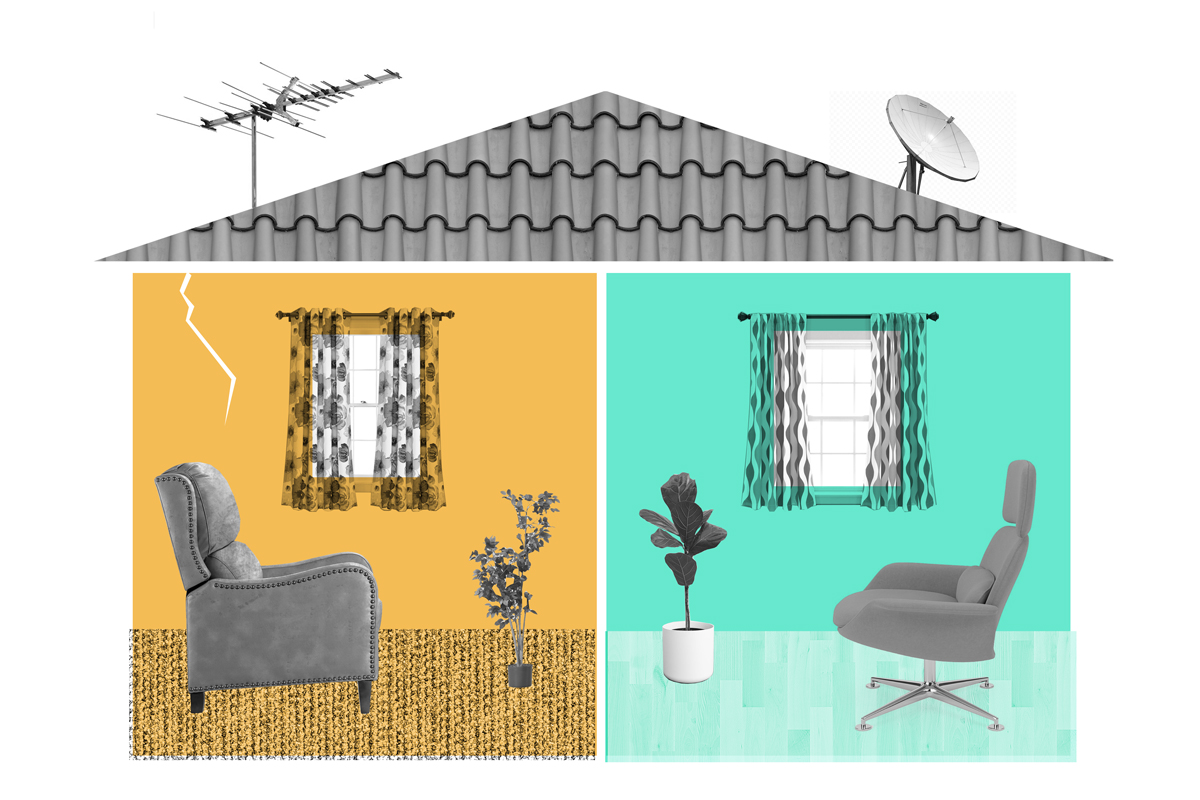
The Duplex
Here’s the scene for our experiment: You own a duplex apartment building. You live on one side of it. You haven’t kept it up very well. You once painted the walls an ugly shade of orange, which you now regret. In the living room, there’s a tattered recliner by the window. On the window are some ugly curtains that you purchased from Target 10 years ago. Also orange. Next to the window is a ficus plant that you keep forgetting to water.
The tenants in the unit next door just moved out. Which is fine. They were too loud but were always asking you to turn down your music. Now that their apartment is vacant, you decide to renovate. You paint the walls a nice shade of blue. You buy a mid-century style recliner for the living room, hang some new curtains, and buy a plant that can flourish over there by the window. Everything looks great. It should be easy to find a new tenant.
You’ve got a couple problems though:
- You really don’t want to deal with new people and all their complaining, but you need a new tenant who can pay their rent and help cover the mortgage.
- You would much prefer to live in the new, renovated apartment instead of your current crappy one. You could switch apartments, but you’d then have to clean up the old one and get it ready to show to prospective tenants. Sounds exhausting and expensive.
You know who’s very responsible, appreciates your music, and has no problem living in an apartment like yours? You! If only your neighbor were a person, not just kind of like you, not even exactly like you, but actually you. That would be perfect.
Luckily, this duplex also happens to be the laboratory for a thought experiment. Let’s look at what we have lying around that could help.
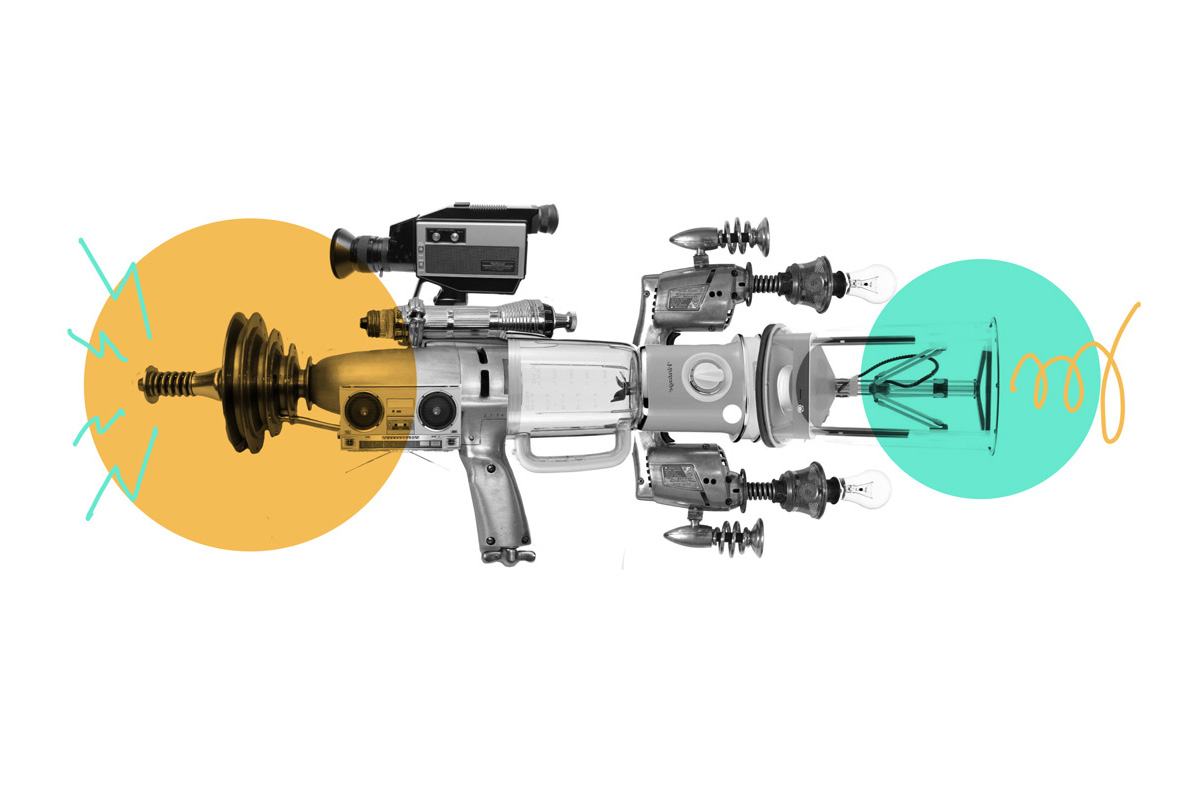
The Digital Duplicator
A lot of scientists agree that it’s theoretically possible that one day, you’ll be able to create a digital copy of your connectome—the complete map of all the tangled neural pathways and synaptic connections that generate your thoughts and memories. You know, upload your brain to the cloud, live forever, and haunt your enemies from inside a video game. That kind of thing.
Take a minute to imagine everything that makes you “you”bundled into a file on a computer: Your preference for watermelon Jolly Ranchers over sour apple; the satisfaction you get when the handles on the coffee cups line up perfectly in the cupboard; your ability to recall the lyrics of Pump up the Jam by Technotronic. All of it.
If this file started texting your best friend, it would use all your phrasing, all your favorite emojis, and all your misspellings. Your friend would never suspect it’s not you. If you and this file took an online quiz called “Which member of the Spice Girls are you?” you would both get Posh Spice. If you and this file placed an order for McNuggets, you would both ask for the honey mustard dipping sauce.
But is this file you? Of course not. You would be the one sending texts to your friend saying, “That wasn’t me, that was my digital doppelgänger.” You would be the one at the drive-thru wondering why your computer is ordering McNuggets.
You could safely assume the computer file is in there feeling all the weirdness and terror you yourself might feel if you woke up to find yourself stuck inside a computer, but you would still be the same you you are right now, possibly feeling sorry for your poor, disembodied soul mate, or maybe subjecting it to some form of psychotic, Black Mirror-inspired self-torture.
To make things less disturbing in that respect, imagine you’re not just scanning the mental connectome that’s represented by brain cells, but also the current state and configuration of every cell in your body, including the extra honey-mustard sauce in your stomach. (Besides, if you’re scanning the brain, how do you know where to stop scanning? Doesn’t your nervous system extend through your entire body and connect to all the other other systems?)
Let’s say it’s possible to scan and replicate every cell in a human body down to an atomic resolution, and we happen to have a lightning-fast Epson All-in-One 3D Brain-Body Printer-Scanner. Get it charged up, because we’ll be needing that in a minute.
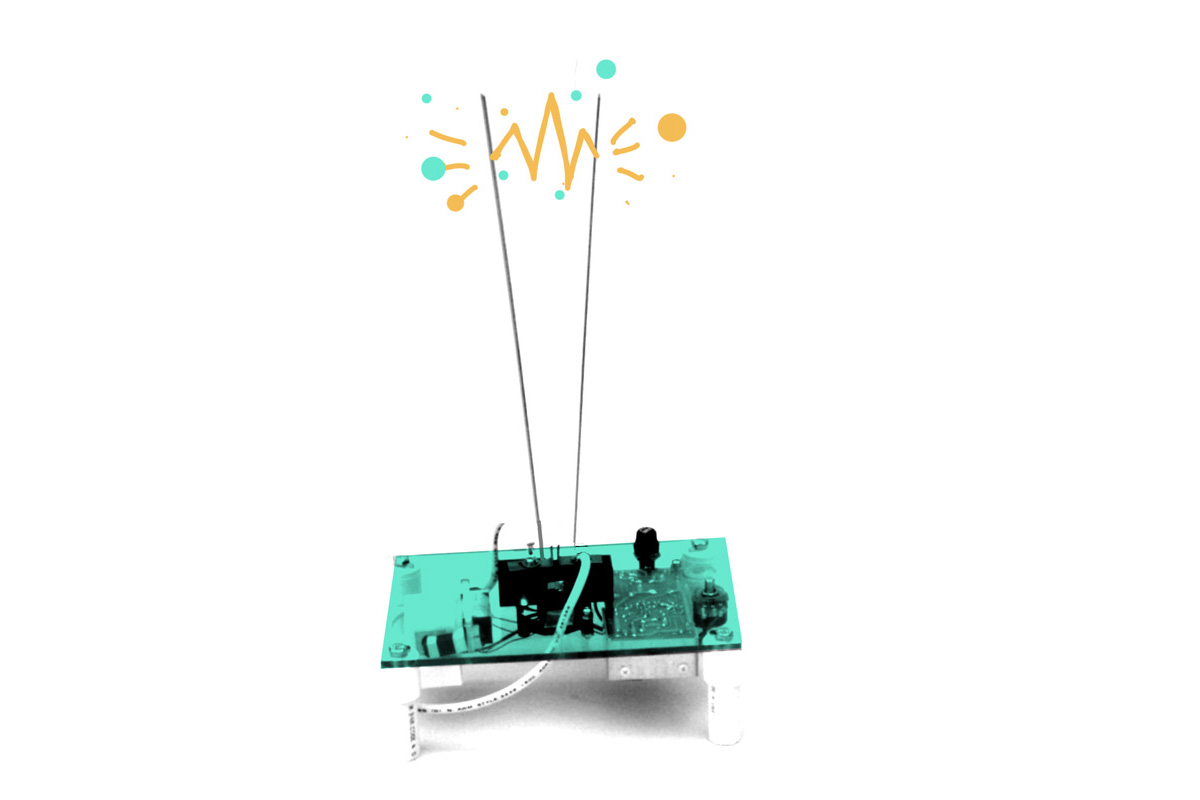
Fine. You can have one of those Jacob’s ladder spark reactor thingies.
The Capitalized You
Before we go any further, it might help to clarify what we’re talking about when we say the word “you.” For one thing, let’s capitalize it. I mean, why does “I” get to be capitalized while “you” and “we” have to wait around until they start a sentence?
The You we’re talking about is what the philosophers usually call “phenomenal consciousness” or “qualia.” At least I think they do. Those are still just words with vague definitions.
To be specific, the You we’re capitalizing is a thing that’s so essential it usually goes unnoticed. And when it’s gone, you don’t notice anything. But when you take a breath, relax your eyes, let the light in, and listen to the sound of the traffic and birdies, you start to notice it. The noticing itself is the thing in question. The questioning is the thing in question. It’s that buzz of being; the existential hum; the commonplace miracle that turns on when you wake up and turns off when you go to sleep; the thing that gets warpy after too many beers, fades out during a dull lecture, or gets swept away by a good movie. It’s all the memories and internal monologues mooshed together with the sights and sounds of the present moment. It’s the first-person narrator inside your head, looking out through your eye sockets; the mishmash of metaphorical associations, emotional needs, voices of your parents, echoes of the song you heard at the supermarket, and the nagging suspicion that there’s something better to do. It might feel good or it might feel lousy, but it’s yours and nobody else’s. And unless you’re just a non-player character in a very elaborate simulation created to deceive me, it’s the thing that hopefully knows exactly what I’m talking about.
Are we talking about the immortal soul? No. Not quite. We’re out of Sunday school. While it’s cozy to pretend you’re a floaty spirit that exists in a non-physical plane of existence, riding around in a meat-body, undergoing a series of tests before getting judged by an invisible meta-parent against a set of ancient rules to determine if you qualify to move on to a holy better-verse, well… I guess you’re free to keep believing whatever makes you happy, just know that’s not what we’re talking about here.
The Physical Psyche
Most evidence points to the sad fact that your consciousness is a by-product of your brain. And your brain is a body part. It’s an astounding body part that’s so ridiculously complex we barely have a clue what it’s up to, but it does appear to be made out of physical cells interacting with each other, and the individual cells themselves don’t seem to be doing anything all that different from other cells. It seems to be their unintentional tendency to form elaborate networks of networks of networks that gives them all their power.
If you have any doubt that what’s going on in your mind is a by-product of chemistry, just talk to an anesthesiologist, mixologist, or the girl with the green hair down at the dispensary. They will all provide you with the chemicals necessary to convince you.
The separation of mind and body is a conceptual one. It feels like a fitting description of what it’s like to think and be alive. Maybe it feels like we are metaphysical spirits cursed to inhabit the realm of blood and dirt, but as soon as you disrupt the brain, you’ll stop feeling that way. That feeling itself arises from billions of neurons acquiring enough stimulation to activate networks of other neurons that eventually make you say, “Feels like my thoughts are separate from my body.”
You may want to cite some awesome anecdotes of out-of-body experiences, or the time you got super high and went to the Pink Floyd laser show at the planetarium and felt like you were one with the universe, but again, you’re witnessing the miracle of chemistry at work.
I don’t want to de-mystify all the mystical experiences of life, but I’m hoping our experiments can help re-mystify the normal ones.
So, for now, we’re going with the assumption that thoughts, feelings, and the other components of consciousness have a physical correlation to various patterns of biological activity housed somewhere in the brain. You and your body are one and the same. The mind-body connection is called a spinal cord.
Now that we’ve got all our conceptual equipment set up, let’s get you a nicer apartment with the perfect neighbor. And while we’re at it, let’s get you in a resilient new body that’ll keep you looking young and fit well into the next century.
Experiment 1
“Copy & Paste”
PROCEDURE
- Sit back in the old recliner in the old apartment.
- Activate the digital duplicator and let it scan every cell in your brain and body.
- Send the duplicator next door to the nice apartment and point it at the mid-century modern recliner.
- Watch on your remote monitor as it prints out an improved version of your brain and body using indestructible silicon nano-polymers.
(Let’s say the duplicator is programmed to print your brain in an unconscious state, so the new-you is asleep. In your hand is a remote control that brings new-you online.)
- Press the “wake up” button.
RESULTS
On the other side of the wall, you hear a voice, just like yours, saying, “It worked! It worked!”
If it worked, why are you still sitting in the crappy recliner? You run next door and meet your doppelgänger who couldn’t be happier with how things turned out. It’s you, but it’s a lowercase you.
You: What do you mean, “It worked?”
new-you: I’m still me, but I’ve got a new body and a new apartment!
You: You’re actually just a copy of me.
new-you: Isn’t that what you wanted?
You: Yes, but I wanted to have the experience you’re having.
new-you: You are having it.
You: No, you are.
new-you: But I’m you.
You: No, you’re just a jerk.
new-you: I know you are, but what am I?
(It goes on like this, and devolves into a wacky BBC sitcom called something like Oh Me Oh My starring the guys who played the Weasley twins in the Harry Potter movies.)
So now you have a great neighbor who likes the same music as you and is thrilled to have a new apartment. The two of you can definitely relate on a lot of levels, but new-you doesn’t seem to care that they’re not You you. They’ve got a you of their very own that, from their point of view, feels just like the one you’re walking around with. Same memories, same insecurities, same annoying obliviousness. Is that why you’ve been living alone this whole time? Oh god—Is that why the other tenant moved out? You’re impossible to live with? After a while, new-you’s incessant happiness starts to get on your nerves and you begin researching the ethics of clone murder. (That’s season 2.)
So why does this jerk get to be the one in the fresh new body in the better apartment instead of you? There’s an easy fix for that, which you may have figured out.
Experiment 2
“Move-Copy-Paste”
PROCEDURE
- Go over to the new apartment.
- Sit back in your new recliner.
- Send the scanner next door to the old apartment and print out a copy of yourself in the crappy recliner.
- Press the “wake up” button.
- Go next door to your old apartment
RESULTS
There’s “new-you,” sitting in your old apartment.
new-you: Damn! It didn’t work!
You: Sorry. It did work. You’re the copy. Don’t you remember? We started this next door.
new-you: So I have the new body that’s built to last forever?
You: But I have the nicer apartment.
new-you: Give it a year.
Your clone gets the new body, you get the new apartment. Not the worst trade off. (How about Me & I for the sitcom title? Just spit-ballin’ here. Can somebody see what Tia and Tamara from Sister Sister are up to?)
What’s preventing You from experiencing both the new apartment and the new body? When there are two exact copies of your mind, why don’t You experience both lives at once, in some kind of stereoscopic multi-tasking split-screen? It could be like you’re watching two episodes of Bewitched, one on your phone and one on your iPad. On the phone, it’s an episode starring Dick York as Darren, on the other, it’s an episode starring his replacement Dick Sergeant. It would be confusing, but you could eventually follow both plots.

Some people didn’t even notice this switch.
If all that’s required to generate a particular consciousness is a physical brain in the right configuration, then why does it matter where that configuration exists in space? It’s not like every time you move to a new room, you become a different person. Is there something about the relationship between consciousness and the space itself that’s preventing you from being in both places at once?
To get to the bottom of this separation, maybe we can run a kind of control experiment where we change everything about you, except the space you occupy.
Experiment 3
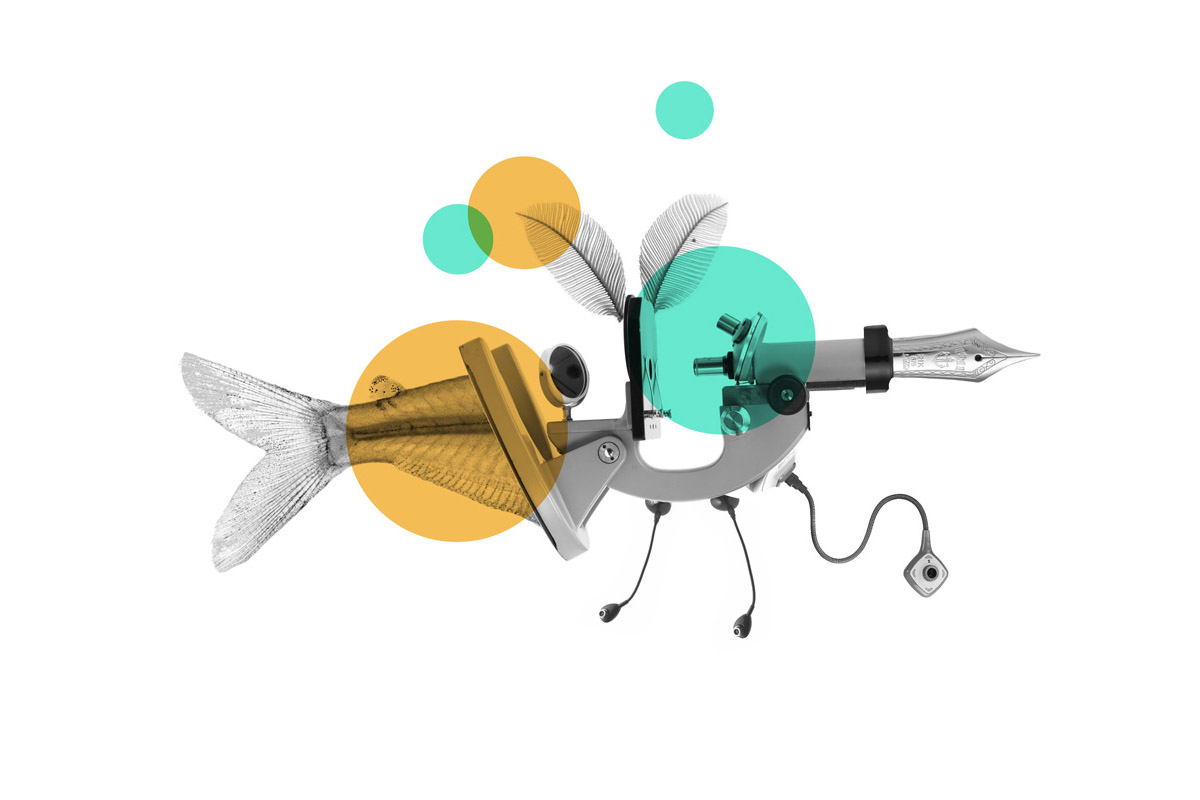
The Nano-Canon Micro-Duplicator
“Find and Replace”
For this experiment, we need to upgrade our digital duplicator to the new Nano-Canon Micro-Duplicator. It’s a molecule-sized nano-bot that can sneak inside your body, scan a single human cell, destroy it with a laser, then print out a new, healthier copy of that same cell in its place.
PROCEDURE
- Sit down in the new recliner in the new apartment.
- Activate the Micro-Duplicator.
- Let your new nano-toy scurry around in your brain, gradually replacing and duplicating your connectome one neuron at a time.
- Continue the process throughout the rest of your body until every cell in your body has been replaced.
RESULTS
Voila. You’ve got yourself a new brain and body.
Did you even notice? Did you stop being You?
A process like this isn’t even something you have to imagine. It’s taking place all the time inside your body. The cells that make up your stomach lining, for instance, get killed off by stomach acid and are replaced every couple of days; you’ll also have all new skin cells in about three weeks. (Interesting side note: Your brain cells never get replaced.)
Based on what we experience biologically every day, it seems safe to say that if one of your quadrillions of brain cells were to be destroyed and replaced, you would still feel the same continuity of consciousness that you currently maintain from one moment to the next. What’s the difference if every cell in your body is eventually replaced? Maybe your new cells are even impervious to disease, or made of silicon, and you’re an indestructible android. That’s great. But the important thing to note is that the You we’ve been talking about is still intact, even though every physical component that brought it into being is now gone.
Can we somehow use this knowledge to get You into the new body and the new apartment? Is the problem that you’ve got this old brain-body hanging around, clinging onto your consciousness? Can we just get rid of it? We should probably check first.
Experiment 4
“Cut & Paste”
For this experiment, we’re going to need a trusted lab assistant. Preferably a nerdy sidekick who can whip off lines of techno-jargon, to which you can reply “Um… in English, please?” (This is the same character who will inevitably have to decide which version of you to shoot in the 3-way stand-off at the end.) Let’s name this character “Razz.” You’ve always wanted a friend named Razz.
PROCEDURE
- Sit down in the new recliner in the new apartment.
- Hand these instructions to Razz:
- Scan my original brain and body (be sure to save a copy.)
- Press the ‘delete’ button to painlessly and quietly vaporize the original me.
- Replace the old me by printing out a new body in exactly the same place.
- Wake up the new me.
RESULTS
Hooray. You wake up in a new, effervescent body, in a freshly-remodeled apartment.
Razz: How you doing?
New-you: I feel great! I’m in a new body in a new apartment!
Razz: Are you sure you’re you?
You 2: Feels like it. Who else would I be?
(Somber music begins to play)
Um… Did we just vaporize your body? It seemed like a fine idea at the time, didn’t it? In the last experiment, when we zapped each cell and put a new one in its place, You were just fine. We even used the same space for the new cells, which seemed to be the key last time. Why should it matter if we do the deleting all at once?
Our premise, along with all observable evidence, says that a working, physical brain is a pre-requisite for a consciousness such as yours. When you’re vaporized (or murdered in any way) you are certainly unconscious. As in, not conscious. As in, devoid of consciousness and incapable of any future consciousness. The You follows the same mysterious path into darkness taken by all minds that die.
After You and everything about You is vaporized, instantly replacing your cells is no different from the first experiment, where we printed out your clone in the other apartment. The new body happens to occupy the same space, but there’s no denying that You were killed, and Razz should probably be tried for murder (preferably in an episode of Law & Order: Clone Trials.)
Sure, there’s a spunky new-you to keep Razz company and out of jail, but You, the protagonist we were rooting fo—or, more specifically, the phenomenon that emerged from the brain activity in the original brain-body combo is no more. It got deleted.
Did it go to hell for toying with the soul in this manner? Probably. But an even scarier question is: Was it even there to begin with?
This is all very confusing. But maybe that’s a good thing? What if we just make things really confusing and hope you end up in a new body in a new apartment with a clone-you as a neighbor? Why not, at this point? Your whole identity is probably some kind of elaborate, self-generated brain-hoax anyway. Might as well find that bottle of tequila and start mashing buttons on the ol’ digital duplicator. We can at least get a taste of how a scientist becomes a “mad” scientist.
Experiment 5

Equipment for the new experiment
“Blind Swap”
PROCEDURE
- Lie down on a gurney in the old apartment
- Do shots of tequila until you pass out.
- Hand these instructions to Razz:
- Flip a coin.
- Heads: Wheel my body to the new apartment. Tails: Keep me in the old one.
- Use the digital duplicator to scan my original brain and body (be sure to save a copy on the internal flash drive)
- Print a new body in the other apartment.
- Use the Nano-Canon to upgrade and replace the cells in the original body, like in experiment 3
- Wake up whichever body is in the new apartment.
- Never tell me which version was the original or I’ll vaporize you.
RESULTS
Nice! No matter what, you’ve got a new body. And depending on the coin toss, one of two things happens next for You:
- You wake up in the new apartment, then go next door to wake up your new, highly compatible neighbor.
- Your clone jostles you awake. You look around and see that you’re still in the old apartment.
Both of these things happen. But only one of them happens for You. The following conversation ensues, with You playing the part of either You 1 or You 2. (You 1 has the nice apartment, You 2 has the old one.)
You 1: You look great!
You 2: Right back atcha.
You 1: I’m still buzzed from the tequila
You 2: The last thing I remember is being knocked out in the old apartment.
You 1: Me too!
You 2: Looks like you got the new apartment.
You 1: Heh – sorry. We can switch places every once in a while, if it’ll make you feel better.
You 2: I think we’ll get along just fine.
Somewhere in here is hopefully the situation we were trying for. You in a new apartment, with a new body, and a new neighbor who also has a new body. And, also, you’re not dead. Your Youness, your subjective conscious experience continues on.
Or does it? Did you drink too much tequila and accidentally misplace the essence of your being? Are You looking through the eyes of You 1, or You 2? Experiment 3 would suggest it’s whichever one was the original, and merely had its cells replaced with the Nano-Canon. But which one was that? Besides the few moments when the nice apartment version awoke, then walked over to awaken the other version, both neighbors share the same continuity of knowledge and memory, and both are stuck wondering whether or not they were the original. Only Razz, who flipped the coin, knows the truth.
You 1: Razz! You have to tell us—who’s the original and who’s the clone?
You 2: We can’t go on living with this uncertainty.
Razz: Um… I can’t remember.
You 1: Was it me? I’m the one who woke up in the new apartment.
Razz: Maybe? I think I had too much tequila. The whole thing’s a blur.
Great. Now you’ll never know. When it comes to the question of where the You-ness ends and the otherness of the clone takes over, it feels like something significant happened here. But what? The original You is here somewhere, in this situation, inhabiting a body and having an experience, but so is someone else, who is just as likely to be the You who started this whole mess. Have we duplicated your subjective experience, or have we destroyed it? Was the experiment a success or failure?
More importantly, when either You or your neighbor goes mad and turns evil from all the uncertainty, who do we root for in the final showdown?
What the hell is going on?
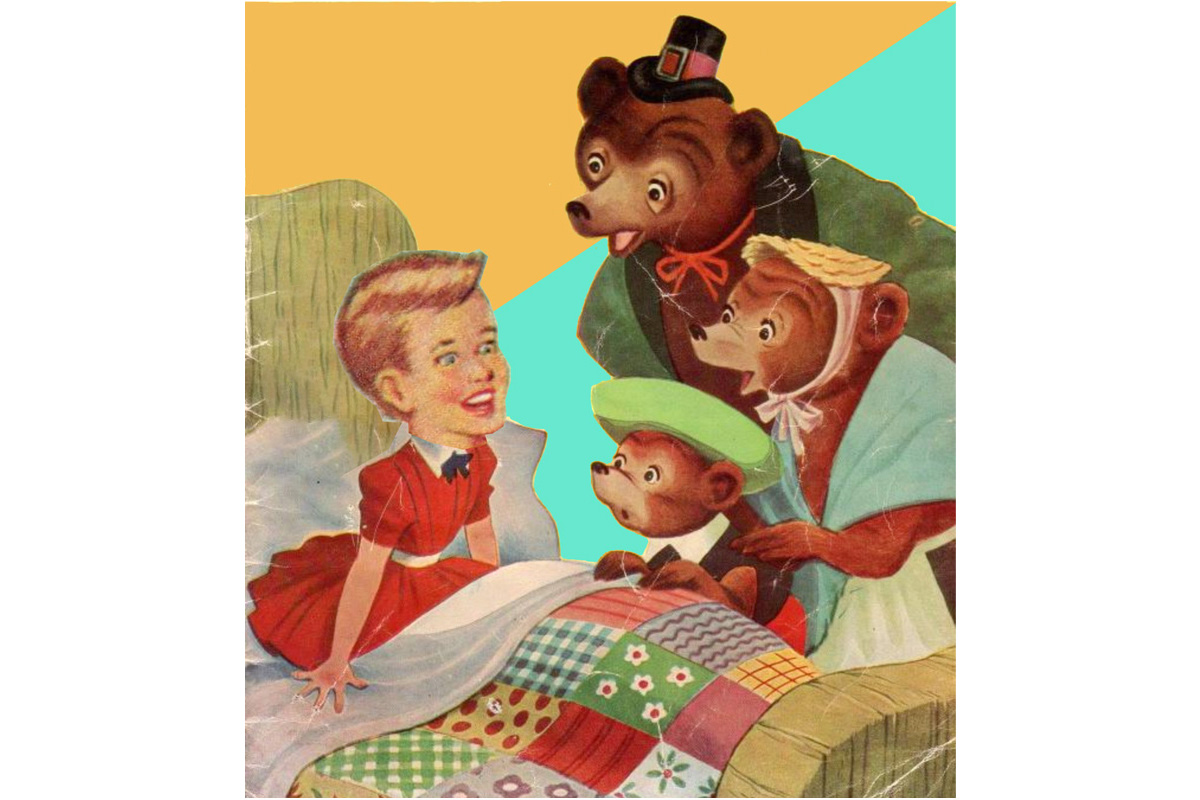
To really grasp why this is all so weird, it might help to go back to the computer file metaphor we’ve been using.
Say you’ve got a text file open on your computer. The text is just a bunch of letters on a screen, but the pattern they make tells the story of Goldilocks and the Three Bears.
Starting at the beginning of the document, delete the first letter, then retype it, maybe with a different font. Do that for every letter in the story until you reach the end. When you go back and re-read the story from the beginning, it’s, of course, the same old story of Goldilocks with the beds, the chairs and the porridge. This is kind of like what we did in Experiment 3 (the “find & replace” version where all your cells are slowly replaced by the Nano-Canon.) Think of your brain-body as the text and your You as the story.
For any of the other experiments, (copy-paste, cut & paste, move-copy-paste) it would be like selecting all the text from the first file, copying it (or cutting it, doesn’t matter). Then you open a new, blank text file. You paste the text. It all seems the same. But when you go back and read it, the story is exactly the same with the chairs and the porridge, except Goldilocks has been replaced by some kid named Brian.
We copied all the letters, the words are the same, the story follows the same structure. Why is the main character different just because it’s a new document? Where is Goldilocks? What was it about that original document that made it so she needed to stay with it, even when the words were erased? Why did this fairy-tale suddenly switch from a first-person to a third-person narrative?
Sure, when we duplicated your brain, we made a consciousness. Except it just wasn’t Your consciousness. It would think and act just like you, and the internal “qualia” of your doppelgänger would presumably be the same as yours, but they would not be You. In Experiment 1 (“copy & paste”) your experiences would still be locked away in your skull, tangled up in the networked networks of ganglia and axions. In Experiment 4 (“cut & paste” where we delete the original), the You we care about, the original main character, would be dead and gone, or at best, floating around as a ghost, taking possession of a teddy bear (in the new animated series: Ghostilocks!—anyone at Disney+ reading this? Hello?)
The closest we’ve gotten to making a true duplicate of your consciousness is in Experiment 5 (the drunken “blind swap.”) In that case, we ended up with two copies of the story, both of them about a character who’s not sure if her name is Goldilocks, or Brian.
Or do we have this metaphor all wrong? Is Goldilocks, the first-person experience, better-represented by what we’re calling the “document?”—an abstract, conceptual container with a set of intrinsic qualities necessary for it to exist?
When we re-typed the story in the original document, we didn’t need to create a new file. In the same way, in Experiment 4, maybe we were able to maintain a single instance of consciousness (You), simply because we didn’t need a new one. In the other experiments, when we created a new brain and all of its experiences, did we inadvertently generate a new “experiencer?”
The big question that comes to mind, when analyzing all these curious results, is: Are we just being stupid? Is it just a tautology to ask why there can only be one, and only one of the thing that makes you the one and only You? We’re asking about a singular instance of a phenomenon that emerges from the existence of a singular brain, of course we’re going to get a singular answer. Is the non-replicable nature of experience just a boring necessity of definition and linguistics? (The trained philosophers are probably reading this like Olympian wrestlers at a WWE match.)
But even if we are just overthinking something that’s as plain as the nose on your face, the situation is accompanied by a real-world, rather important phenomenon, which is that you are You, and not me, and not the president, and not the person who cut your hair, and not an eight-year-old Hindu boy selling handmade puppets on the streets of Mumbai.
By the way, try looking at the nose on your face right now, without a mirror. It’s pretty darn fuzzy.
Is that just the self-evident, I-think-therefore-I-am, essential nature of things? In order to be You, you need to be tucked away in a single place, experiencing everything from the confines of the spacetime coordinates that were assigned to you at birth? Is the amazing feeling of experiencing, and being, and witnessing the universe unfold through a couple of eye sockets just another emergent property of particle interactions that we happen to inhabit?
This is not to say that the mind always feels stuck to one isolated version of itself. Sometimes it does, and that often sucks. Sometimes you can’t believe how inescapable the whole situation of being You actually is. But during the good times, the mind is wildly flexible. From inside a consciousness, we are regularly treated to the joys of empathy, the sense of being connected to others, being in love, sharing experiences, or being in the mind of a character in a story. It’s those moments where we cross the threshold from isolation to connection that we find the entirety of human culture. It’s what makes the whole thing bearable, worthwhile, and sometimes just plain amazing.
But, unfortunately, such experiences are not quite what we’re investigating. In the results of our sci-fi thought experiments, there’s an element of particularity that feels unaccounted for. Is there something about the space we occupy that’s intrinsic to the being part of human beings? Even if, by definition, each specific consciousness needs a brain in order to be generated, and each brain needs to occupy space in order to function—why that particular space? If the brain can be duplicated in a new place, why doesn’t the first-person consciousness travel with it?
Is that just the nature of the mind, that each occurrence of a brain creates a new being?
There’s one more experiment we can run to test this out. This one is a bit more complicated, but try to follow along.
Experiment 6
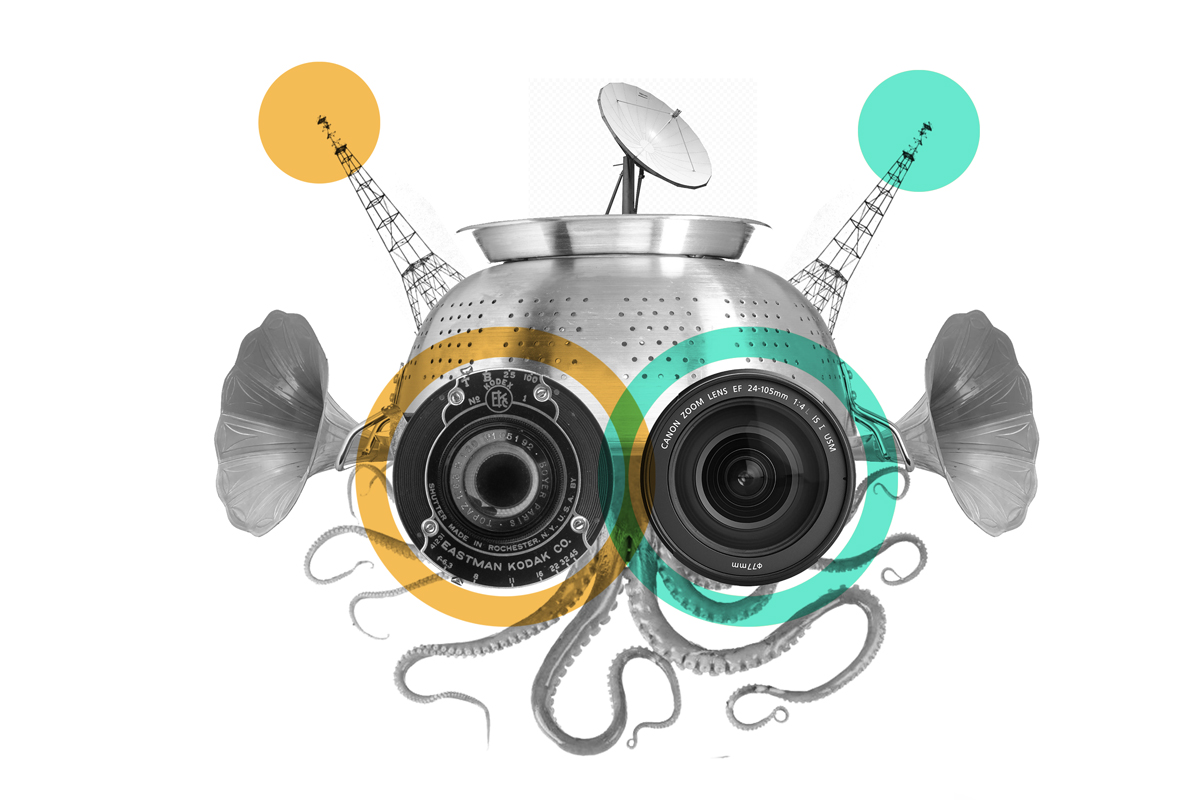
“Control-Shift”
Time for some more equipment. We need an advanced virtual reality apparatus. Two, actually.
The new SimulaX 3000 Sensory Remotes can transmit the feed from one set of sensory organs directly to the corresponding signal processing mechanism in your brain. So the signals from another set of eyes can bypass the signals from your optic nerves and stimulate your visual cortex, allowing you to “see” what the other eyes are seeing. The audio-ear-feed from a remote set of ears can highjack your auditory cortex. The tactile-butt-feed from the nerve-endings of another butt can make you feel like you’re sitting in a comfier chair. Putting a Jolly Rancher one tongue, allows the other person taste it, to the point that they know it’s watermelon flavored. An advanced feature also allows one brain to control the body of another. So, for instance, thinking about moving your own eyes, moves the eyes in the remote body; Wiggling your own pinkie wiggles the other body’s pinkie. (If you’ve read Neuromancer, or Ready Player Two, or seen Avatar, you should have no problem imagining any of this.)
PROCEDURE
- Sit down in the old recliner in the old apartment.
- Using your old digital duplicator, scan and print a copy of your brain and body over in the new apartment. (Make sure it’s asleep.)
- Attach a SimulaX 3000 to the head of your sleeping clone.
- Attach a SimulaX 3000 to your own head.
All systems are go. Razz asks, “How you doing in there?” You give the thumbs-up. Using the handy companion app on his phone, Razz adjusts the settings on the SimulaX, so the sensory information from your clone neighbor begins feeding into your brain. At first it’s nothing. Just darkness and buzzing. Then Razz adjusts the settings so your brain is in control of some of the clone body’s motor neurons. Now you can open the clone’s eyes and move their toes.
A part of your clone’s brain might wake up at this point and think, “What the hell is happening? Why does it feel like my toes are wiggling?” but it would all feel like a dream, since they are basically asleep. You’ve successfully hijacked the sensory feed of your clone without them knowing. You’re like a demon possessing your neighbor while they’re asleep. (How about My Demon Neighbor starring Zack and Cody, all grown up.)
As for your body, the motor neurons have been bypassed so the signals your brain is sending and receiving from your fingers and toes have been replaced by the signals from your clone’s fingers and toes. But you’re aware of this. Shifting your focus to your own body gives you a sense of paralysis. Trying to see through your own eyes gives you a sense of blindness. Kind of like when you’re half asleep.
For Christmas, my brother-in-law thought it would be hilarious to get me an Oculus VR headset. If you’ve ever tried one, you might recall a sense of disorientation that occurs when you think about your real feet as opposed to your avatar’s feet. But it’s still You, obviously. Your consciousness sticks around regardless of whether you focus on the experience of being blind to your real-world surroundings, or the experience of being in a ski lodge trying to adjust your Facebook privacy settings so your middle school crush doesn’t know your life has come to this.
Connecting to your clone’s senses is similar. It’s a feeling of being in two places at once, and inhabiting two bodies. But you can pick which one by shifting your focus. It’s delicate, like staring at one of those “magic-eye” random-dot stereograms trying to get the shark to appear.
All this to say, the mental effects of this experiment would be weird, but conceivable based on what we know and experience. None of it requires the addition of a twin who could steal your identity.
Just to prove this, Razz switches the device to “mirror-puppet mode” which lets you control the clone body while also controlling your own body. So when you walk forward out the door, your clone puppet might walk forward into a chair, causing both of you to perform a hilarious pratfall (and form the premise of an upcoming Netflix comedy: My Neighbor My Puppet.)
With a one-to-one, wireless connection established between the neurons in your old brain and the ones in the clone brain, you can now have a variety of dual experiences, depending on the selections made in the interface. You could be seeing the nice blue curtains in the renovated apartment, while feeling the lumpy cushions of the recliner in the old apartment. If your clone body chugs a soda, your original body might burp.
Congratulations. There are now, for all intents and purposes, two of you. Or, maybe more accurately, one of You, split into two. Your internal experience is about as close as you can get to being in two places at once, but you’re not experiencing either place in its familiar entirety.
This is fun, but a little disconcerting, so you ask Razz to configure the settings in such a way that your entire conscious experience is that of being in the new apartment. Your old self is lying asleep in the old apartment, controlling the new body, feeling all of its happy feelings as it admires the fresh new environment.
Razz: Where are you now?
You: I’m right here in the new apartment.
Razz: Right, but where are you for real, though?
You: Oh, I’m lying in the old recliner, controlling my body.
You’re basically living the cyberpunk cliché, like Keanu Reeves, lying in a chair with a shaved head while his Matrix avatar is out there doing kung-fu with a fully-styled coif.
But there’s one last step in this experiment. While you’re immersed in your virtual tour of what it’s like to be the new you in the new apartment, Razz starts fiddling with the SimulaX and accidentally presses “Control-Shift.” (It’s an honest mistake because this is the key command that the interface designers thought would be the obvious way to actually “shift control” of a body.) Without you knowing it, the neural activity in your old brain that’s responsible for focusing your attention and determining your body movements is mirrored in the brain of the new body, giving it autonomous control of itself.
From your perspective, the control-shift happens in the background, while you’re playing with the new blender in the renovated kitchen.
Razz: Um… I think I did something?
You: What? Everything’s great.
Razz: Where are you now, exactly? For real?
You: Still in the old recliner, controlling my body.
You walk next door to check yourself. Sure enough, your old brain-body is still lying there in the old apartment, just as it was when it was remote-controlling your clone avatar. The difference now is that there are no incoming or outgoing signals that require you to be conscious. In other words, you’re asleep. Just like every night.
Razz: Ha ha. Watch this.
Razz removes the SimulaX3000 headset from your sleeping body. Absolutely nothing happens.
You look at Razz, aghast.
You: What did you just do?
Razz shows you the interface, showing there are no longer any brain signals shared between the bodies.
Razz: May I?
Razz lifts the SimulaX 3000 off your own, new head. Absolutely nothing happens.
You: I think we did it!
Razz: Eureka!
You: You don’t get to say Eureka. You’re just the assistant.
Hearing the commotion, your old body wakes up.
Original You: Sorry. What did we do? I was asleep.
You: I did it! I’m in the new body, in the new apartment and I’ve got you as a neighbor. I was awake for all of it. I started right where you are now, dove into the virtual experience of being over here, and without realizing it, moved over here completely.
Original You: I remember that. I was basically in the new place and the new body, but then I must have drifted off. It was fun, but, honestly I’m glad to be back.
You stare at Original You for a minute and start to wonder, “Who the hell is this person?”
Seriously. Everything about the brain and body of Original You is exactly the same as it was when you began the experiment. It should be generating You and your whole conscious being, just as it would if you woke up from a nap.
But that’s impossible. You’re right where you’ve been during this whole procedure, enjoying the virtual-turned-real thrill of inhabiting the New You. You watched the original you wake up before your eyes. Did You suddenly whoosh back into your old body when this happened? Why would you? The person in the old apartment is an entirely separate person, like any other entirely separate person.
Conclusion ?
So what have we learned, besides the fact that I need a network dedicated entirely to body-swap movies? (The Twinz Network: “Make the switch!”)
Like many such movies, it seems like we’re dealing with a continuity issue. In that last experiment, the You-ness of the VR trip into your clone body, as freaky as it was, went un-interrupted. Awake and aware. Just you being You from one second to the next while all components of consciousness were transferred from one body to another.
As for your original body, when it fell asleep after the control-shift, it somehow, released the thread of consciousness and handed it off to the new body. When it re-awoke, it apparently brought into existence a new instance of your awareness. It was you, but no longer You.
If absolutely everything about your old brain-body configuration is the same, why is it unwittingly playing host to a fresh version of yourself, while You, the singular experiencer of ultimate Youness, the main protagonist in your personal sit-com, has moved next door and now must deal with a clone neighbor who possesses all the annoying quirks of yours which you never previously noticed.
So if it’s not your specific neuro-biology or your specific location in space that’s making you You, as opposed to someone else, then what is it? I definitely don’t know, but it seems to be some kind of internal, flickering feedback loop that emerges when the brain produces a continuity of one moment being connected to the next. Time, in other words. Our old nemesis… Chronos… Enforcer of Deadlines… Holder of the Grand Day Planner… It’s been you all along.
Is an internal sense of time the only thing that separates You from the not-you? The tendency of your thoughts to follow familiar paths and insist on consistency gives rise to an over-arching meta-illusion that there’s a single driver in the driver’s seat of your body?
As long as this simple psychological quirk is maintained, your individual soul rages bright against the darkness, but loosen one little connection, and suddenly you’re battling your anti-self?
I’m sorry—this is way too long for a blog post, and I’ve got a Hello Fresh taco recipe to prepare, but all this brain tinkering has left me with some major questions:
- If it’s theoretically possible for You to pack up and move out of your body during the night, why doesn’t such a thing happen every night? Or does it? How would the new you that comes online in the morning ever know the difference if the You from last night traveled through the dream world and took possession of a single mom, struggling to make it as an advertising executive? (Soul Squatters, coming this fall to ABC. Yes? No?)
- Is the conscious mind like a cord floating through the world, forming random perceptions into shiny beads of time and stringing them, one by one, in order of appearance, into a necklace of identity for you to hang around your neck and call your life? And also dude, can I get another hit off that?
- If your psychic being were a subscription streaming service, at what point would you need to pay extra for the package that allows playback on multiple devices?
- When you finally decide to murder your clone neighbor, will the life insurance company considered it suicide?
- If you included a chapter about this experience in your autobiography, could your clone accuse you of plagiarism?
Besides, these obvious issues, it would seem this limitation on our existence and perception, this distinction between self and other that makes it so I can tell I’m me and not my evil twin (even if you can’t)—it’s maybe not just a minor inconvenience. Socially-speaking, it makes it hard to relate and empathize with situations that aren’t yours, but it also appears to be interfering with science’s ability to make sense of the universe at a quantum level. Or more accurately, to mathematically encode the nonsense of it. I won’t get into that, because I’m not that smart, but it’s starting to look like a space-time continuum is a requirement of individualized consciousness, not of the physics that gave rise to it. Einstein knew this was an issue a while ago, as evidenced by this JPEG I found on a stranger’s Twitter feed.
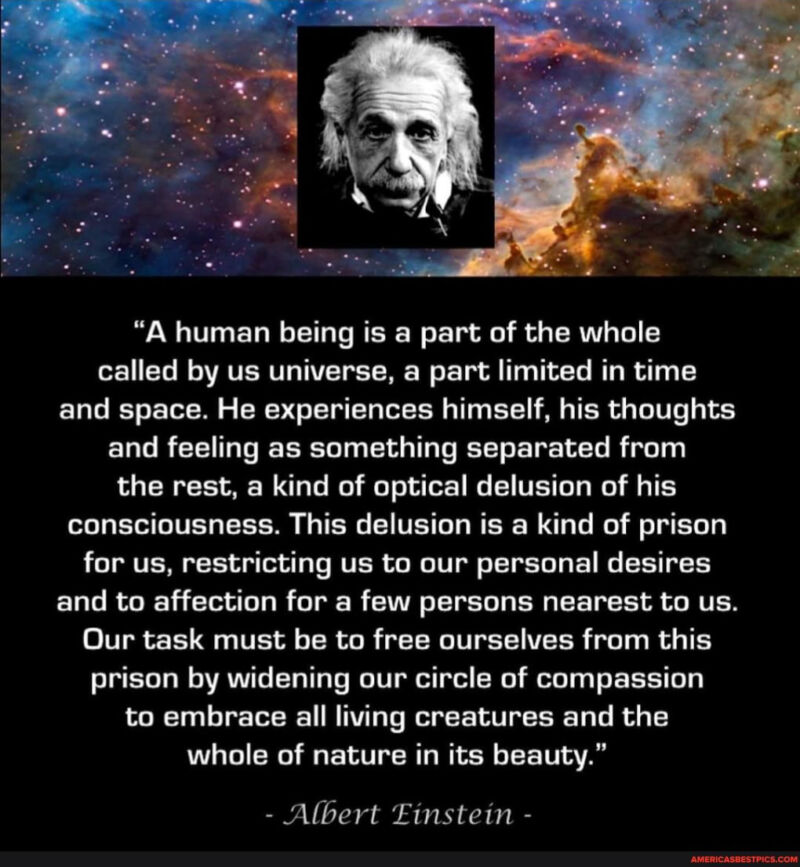
In most body-switch movies, or episodes dealing with self-duplication, the nitty-gritty logistics get explained away as the effects of a birthday wish, or a talisman from an antique store. The entire question of individualized consciousness—the filter through which every grain of truth and reality must first pass—gets tossed aside as something wispy and magical.
And while it does feel miraculous at times, to be alive and awake, that doesn’t mean it’s beyond human comprehension. In fact, it is human comprehension, and thanks to our curious friends in neuroscience and psychology, we already understand it quite a bit. Or at least enough to know that, like everything that the forces of nature have conspired to produce, the more we understand it, the more magical and awe-inspiring it will become.
Except wait—we still need to travel back in time to to spawn an infinite number of clone twins from the multiverse. And what about amnesia and multiple personalities?
Oh well, maybe next time.



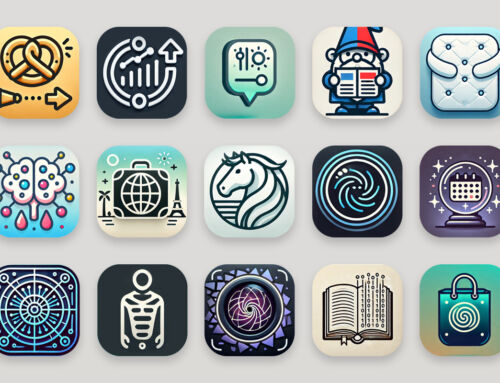

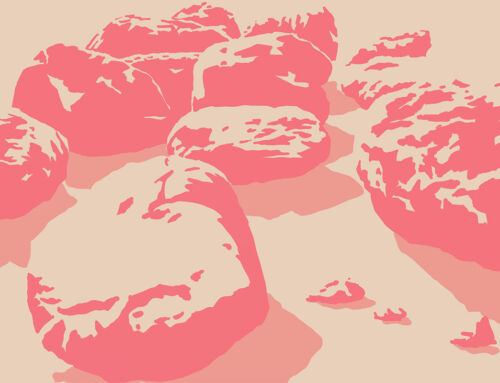
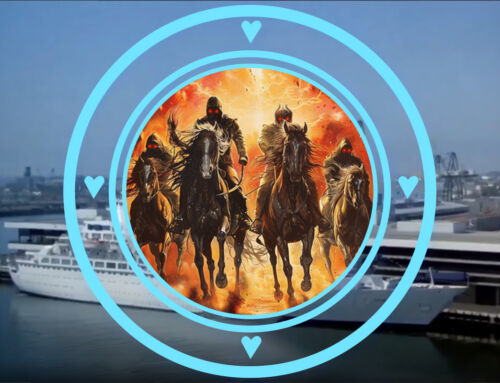
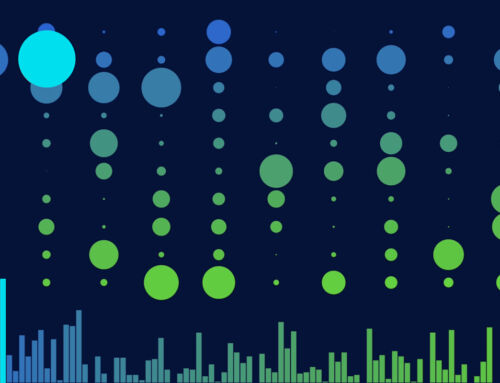
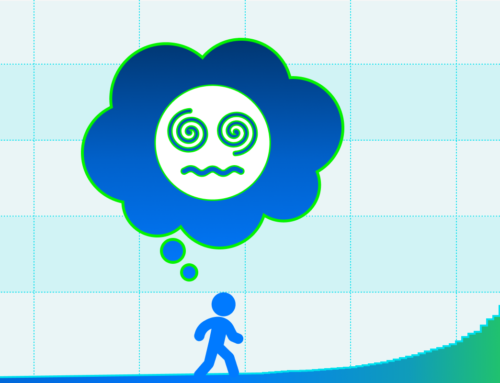



This just kind of blows my mind… but then again that is the hope. Love traveling through these thoughts to find You.
Love your writing. Much more fun than reading “professional” philosophers trying to gaslight each other over whether they are brains in a vat.
This was incredibly entertaining while also being thought-provoking! I love your sense of humour!
Great piece! Absolutely stimulating. Yes, the necklace of time-space beads, as it relates to brain and connectome, is evidenced by neuroplasticity. Like rings in a tree that record its experience over time thus changing its shape throughout your life. Which begs the question, does connectome extend beyond our physical bodies and commune with larger connectome? While brain cells are never replaced, new neural pathways can always be created. Allowing for new ways to experience You. Let the old ways go and new ones will grow. The first step to discovering new things is leaning into the discomfort of not knowing. And being willing to laugh at Life. Capital “L“ intended.
True and lovely
W O W. This is the best dive into the real nuances of consciousness I have ever read. Prompted me to remember to go take my anti-anxiety meds bc I am gonna have an existential crisis now. Thanks (unironic).
Thanks for reading! Glad I could do my part to support the struggling pharmaceutical industry. Also nice to have a fellow Western New Yorker pay a visit.
I think the real you is your own neural network and physical attributes that create a biofeedback mechanism to external stimuli. So, in effect, your thoughts and memories are somewhat malleable. Because, you’re not the same YOU from 10, 15 or even 20 years ago.
Your clone YOU would take on a slightly different trajectory than the original if living long enough. In that, they would become a different person and no longer be another you.
That last part “Without you knowing it, the neural activity in your old brain that’s responsible for focusing your attention and determining your body movements is mirrored in the brain of the new body, giving it autonomous control of itself.” Is a bit of a stretch. That doesn’t really mean the old you reclining on the sofa is suddenly going to transfer to the clone. The problem is no one knows what it means to be you. There isn’t a good enough of a definition or understanding of what consciousness is. We have absolutely no idea of what it is. Why do i see and experience the world through my eyes and not someone else’s. What happens after an eternity of time has passed and trillions of universes have come and gone and then one day a human gets born again with the identical configuration of neurons as I have now. Will it be me getting reborn again ? or will it just be someone like me. The problem is that we are trying to apply logic to something that defies all logic. To understand and wrap your head around the concept of self awareness or consciousness might be as futile as seeking to understand why there is something instead of nothing or what came before the big bang or trying to understand that time has not always existed.
Thanks for the thoughtful reply. You’ve definitely pinpointed the core question which is that we don’t have an actual definition of consciousness. But I’d say it’s an important and exciting thought, not a futile one. If the feeling of controlling a body and absorbing what comes through its senses gets transferred, what else is left?
First thing I would like to point out is that the “real you” would be the one with the new body. Our Goldilocks would be sitting in the blue room in experiment 1, and the orange room in ex2. But why? because of the quantum no-cloning theorem.
The activites in your brain depends on quantum mechanics. The electricity in neurons are actually sodium and potassium ions, which have quantum spin numbers and all that stuff. In fact, the “digital file” of you would actually be composed of quantum information – a quantum blueprint of you, because in the quantum world, everything is just quantum information expressed in a solid form.
Quantum information cannot be cloned, mathematically (no-clone theorem). They can be teleported, and there are reports on such experiments, most notably a calcium ion teleported across a river. It has been reported that after scanning and teleporting, the original Ca ion was “jumbled” – all the quantum information was now a superposition of what it wasn’t. If you “teleported” “A” across your imaginary house (from orange to blue) the “original A” would become “{B, C, D, …, Z}” superpositioned while the blue room receives information for “A” from which an A would be built. It is important to note that the act of scanning – observing – the Goldilocks(A) turned her into a Brian(superposition of B…Z), and the file itself is now the Goldilocks.
(I will refer to the original quantum state as Goldilocks, and the jumbled quantum state as Brian from now on.)
If your consciousness heavily relied on the quantum information, you would soon realise that the Brian is not the Goldilocks. The Brian in the orange room would talk weird, like she has brain damage (he literally has). Since you messed up the quantum superpositions of her entire body, she might not survive the scanning. But what if your consciousness did not rely too much on quantum superpositions? What if the act of “becoming Brian” was not fatal, and it did not leave a dent in your consciousness (like taking a single lego piece wouldn’t make a dent on the Star Wars Death Star set, but of course it depends on what piece)? You as the new Goldilocks(new-you in Experiment 1) can tell Brian(You in Ex1), “Ha, I’m scientifically and Mathematically the real me!” but Brian could be like “Shut up, nerd.”
It would scientifically be correct but morally be incorrect to dispose of Brian (who still thinks he is Goldilocks) because he is technicqlly not Goldilocks anymore.
Here is a fun experiment I call Copy-Paste-Paste. Razz scans You, vaporizes You, and prints two new-yous – one for each room. Here is what would happen (original quantum state is Goldilocks, jumbled state is Brian):
Goldilocks becomes Brian when she gets scanned in the orange room (the first observing). The file ‘you.qtxt’ is now the Goldilocks. (BTW, If Razz opened this file with say, a text editor out of curiosity, the file becomes the Brian and Goldilocks is gone.) Razz proceeds to kill Brian. When Razz prints the first new-you, the new-you becomes the Goldilocks and ‘you.qtxt’ is now Brian2 (the second observing). When Razz tries to print new-you again, the printer will either reject the file (because some quantum headers are incorrect), or print out Brian2. you.qtxt becomes Brian3. Note that Brian, Brian2 and Brian3 will all have differenr superpositions, so Brian is as different as Brian2 as Brian is different from Goldilocks.
Then again, I am not an *expert* expert on quantum mechanics. If you can, please correct me!
sources:
M. Riebe et.al. (2004), “Deterministic quantum teleportation with atoms”
https://www.nature.com/articles/nature02570
https://en.m.wikipedia.org/wiki/No-cloning_theorem
Wow. Some great points in here. Thanks for playing along! I wasn’t familiar with the No-Clone Theorem, but it’s pretty darn relevant if we’re talking about creating identical identities. The “Copy-Paste-Paste” experiment illustrates the issue very nicely.
Is the continuity of subjective experience reliant on an unbroken pattern of quantum information? Is it an expression of that pattern? Hmmm.
Need to think about it for a while. If you have more insights in the meantime, they would be most welcome.
Whoa!
Who came up with the idea of duplicating people? It’s like the pattern of everything around us being copied. I can already imagine it. It’s like a 3-D printer, just with life-living resources!
I wonder what other scientific resources you can show us! This is inspiring. And I beg to differ this should be on https://www.pointlesssites.com because this is inspirational and has a point to it.
I’m glad I’ve read this, because when I want to become an astronaut-Engineer, maybe this could help me. You ae an inspiring person!
Thanks for reading! Here’s a good article of the history of the whole evil doppelgänger concept https://www.atlasobscura.com/articles/history-doppelganger
<3 bye!
Cool !
Reading experiment 6 reminded me of how in Wings Of Fire book 15, Luna could move her real body if she concentrated hard enough. I tried to write this without spoilers.
I love soda
My mind is an enigma
I think severance did a similar concept, but with mind switching where you seperate your work life from your personal life